Adresse
304, rue Cardinal Nord
Centre Dorchester, MA 02124
Heures de travail
Du lundi au vendredi : 7h - 19h
Week-end : 10h - 17h
Adresse
304, rue Cardinal Nord
Centre Dorchester, MA 02124
Heures de travail
Du lundi au vendredi : 7h - 19h
Week-end : 10h - 17h

In modern healthcare facilities, ICU bridge pendants play a crucial role in enhancing patient care and safety. This blog explores the functionalities, benefits, and considerations surrounding ICU bridge pendants, focusing on their impact on patient outcomes and healthcare efficiency.
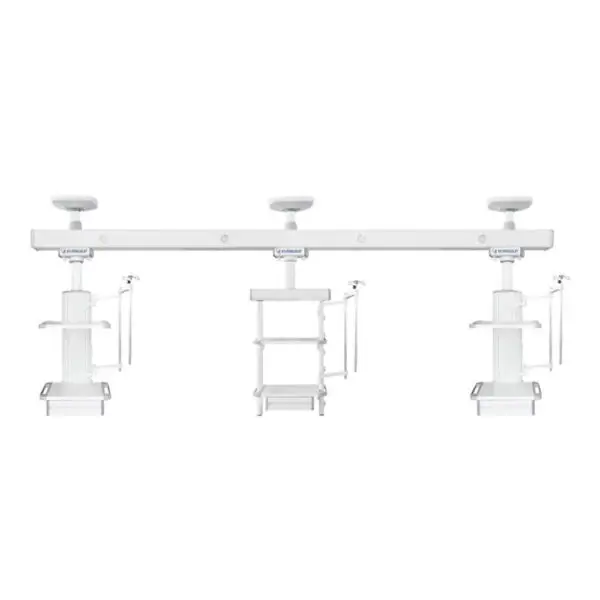
In modern healthcare facilities, ICU bridge pendants play a crucial role in enhancing patient care and safety. This blog explores the functionalities, benefits, and considerations surrounding ICU bridge pendants, focusing on their impact on patient outcomes and healthcare efficiency.
ICU bridge pendants are advanced equipment systems installed above patient beds in intensive care units (ICUs). They serve multiple purposes, including medical gas supply, electrical power access, data connectivity, and integration with medical devices.
ICU bridge pendant are essential in ICU settings due to their ability to centralize critical utilities and equipment directly above the patient’s bedside. By consolidating medical gas outlets, electrical sockets, data ports, and suspension systems within close proximity to the patient, these pendants significantly enhance patient safety.
This proximity reduces the need for healthcare providers to move around the room to access necessary resources during patient care, minimizing the risk of potential errors and delays. In emergency situations, such as cardiac arrests or sudden drops in oxygen saturation, quick access to oxygen and medical equipment can be crucial in initiating immediate interventions.
The typical ICU bridge pendant includes gas outlets for oxygen, air, and vacuum, electrical sockets, data ports for monitors and infusion pumps, and often a suspension system for medical monitors and equipment. These features consolidate resources, making them readily accessible during patient care.
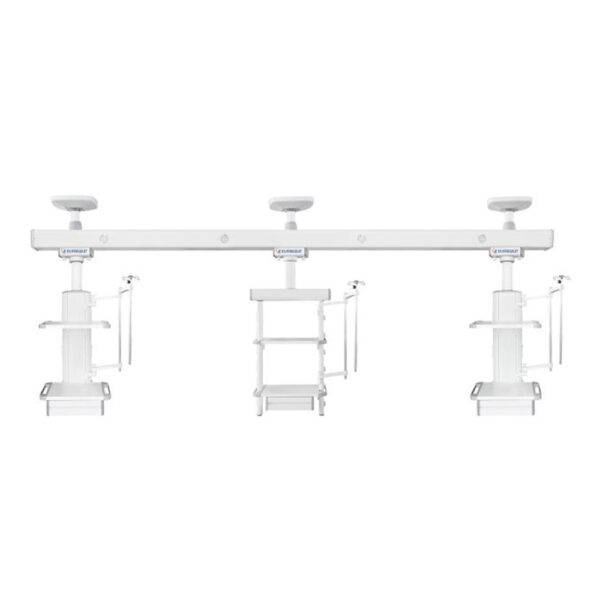

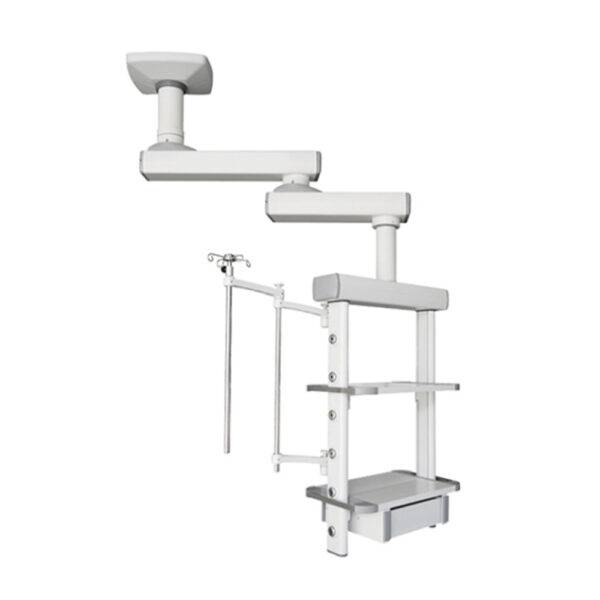


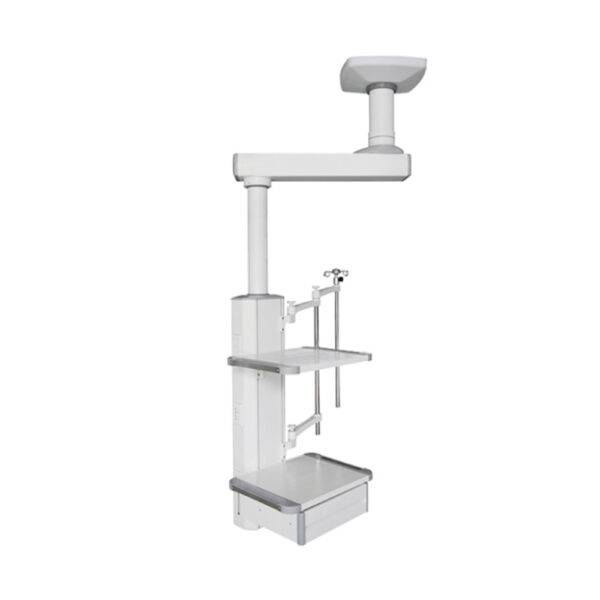
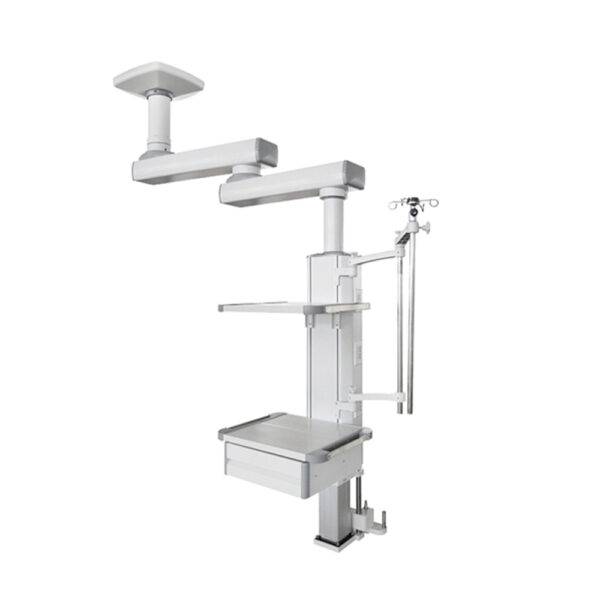
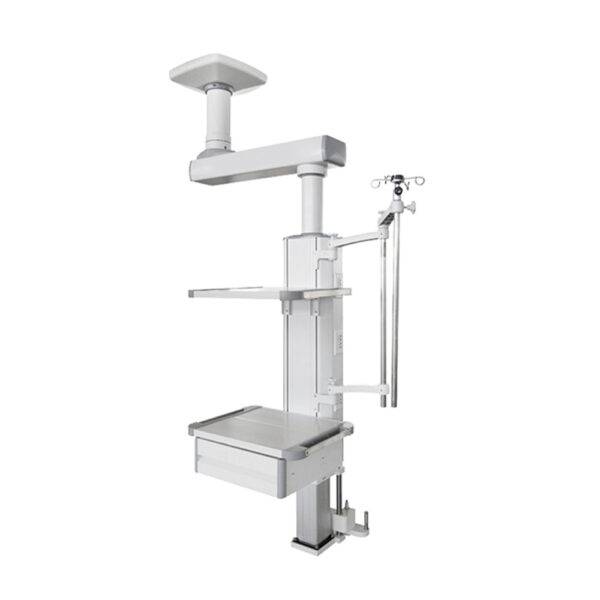
Healthcare providers benefit from ICU bridge pendants through improved workflow efficiency and reduced physical strain. By having essential utilities at arm’s reach, caregivers can deliver prompt and effective treatment, enhancing overall patient care quality.
Patients benefit from ICU bridge pendant as they facilitate a safer environment with streamlined access to necessary medical resources. This setup enhances patient comfort and minimizes disruptions during treatment and recovery.
Implementing ICU bridge pendants requires careful planning to ensure compatibility with existing infrastructure and adherence to safety standards. Factors such as ceiling height, room layout, and equipment compatibility must be evaluated during installation.
Several healthcare facilities have reported positive outcomes after adopting ICU bridge pendants. Case studies illustrate improved patient outcomes, reduced treatment times, and enhanced caregiver satisfaction, reinforcing the device’s efficacy in modern healthcare settings.

| Composant | Functionality and Description |
|---|---|
| Gas Outlets | Provides oxygen, medical air, and vacuum directly at the patient’s bedside. |
| Electrical Sockets | Supplies power for medical devices such as monitors, infusion pumps, etc. |
| Data Ports | Allows connectivity for medical equipment and electronic medical records. |
| Suspension System | Supports and suspends medical monitors and devices above the patient bed. |
ICU bridge pendants represent a pivotal advancement in patient care technology, offering substantial benefits in safety, efficiency, and patient experience. Their integration into ICU environments underscores a commitment to enhancing healthcare delivery and outcomes.
Q : Sont ICU bridge pendants compatible with all types of ICU beds?
A: ICU bridge pendants are designed with flexibility in mind and can typically be adapted to different ICU bed configurations. However, compatibility should be verified during the planning phase.
Q: How do ICU bridge pendant improve patient safety?
A: By consolidating essential utilities and equipment near the patient, ICU bridge pendant reduce the need for caregivers to leave the bedside, thereby minimizing potential risks and enhancing response times during emergencies.
Q: What maintenance is required for ICU bridge pendants?
A: Regular inspection and servicing ensure optimal performance and safety. Maintenance tasks include checking gas and electrical connections, inspecting suspension systems, and updating software as needed.
This comprehensive exploration highlights the critical role of ICU bridge pendants in modern healthcare settings, emphasizing their positive impact on patient care and safety. Integrating these systems effectively requires careful consideration of features, compatibility, and implementation strategies to maximize their benefits.